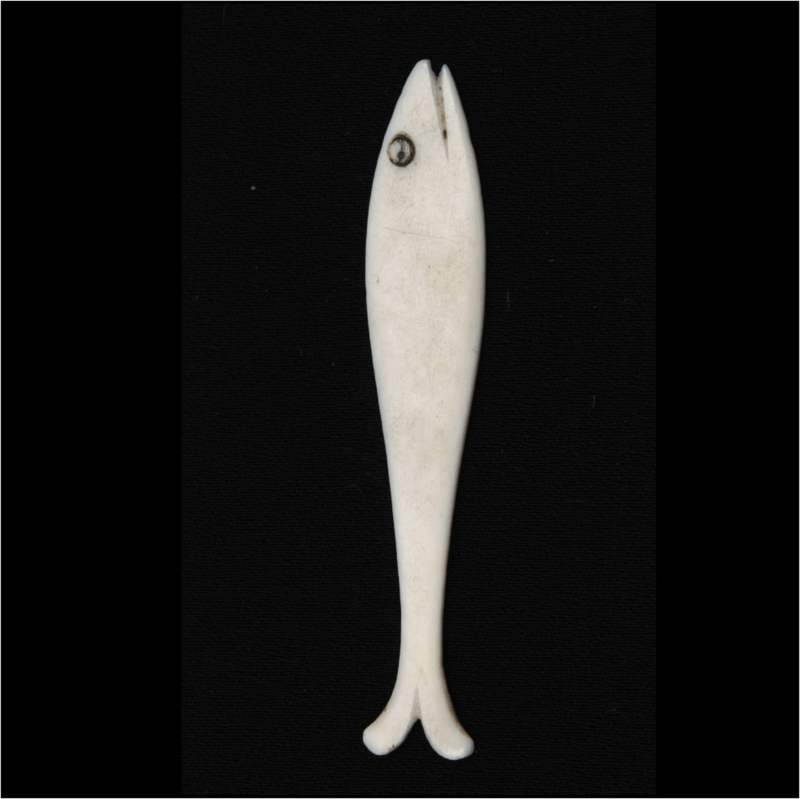About the object
Gambling chip
This carved fish is a gambling token – a way of keeping score while playing cards. Long before TV and digital entertainment, and when only about half the population could read, playing cards at home or in gaming houses was an extremely popular pastime across Georgian society.
This simple little bone object is relatively plain compared to some gambling tokens. Wealthy gamblers would use elaborately carved mother-of-pearl or richly enamelled porcelain to tally their winnings.
One of 18,000
Researchers have matched this token to a five-week-old boy admitted in 1789. He was renamed John Cox by the Hospital. By this point in the Hospital’s history, leaving a token with a child wasn’t required. Parents were given receipts instead from the 1760s onwards. But some still chose to leave an object with their baby. By 1790 the Hospital archive held over 18,000 tokens.
A missing coin
In 1806, curious members of a subcommittee at the Hospital decided to open up some of the records, or ‘billets’, to examine the tokens enfolded inside. They recorded ‘a silver fourpence and an ivory fish’. This description is confirmed by a sketch made of the token in 1894, showing the fish and coin threaded together. At some point, the coin has become detached. The fish’s lost companion is very likely one of the eight silver fourpenny coins in the Collection.

